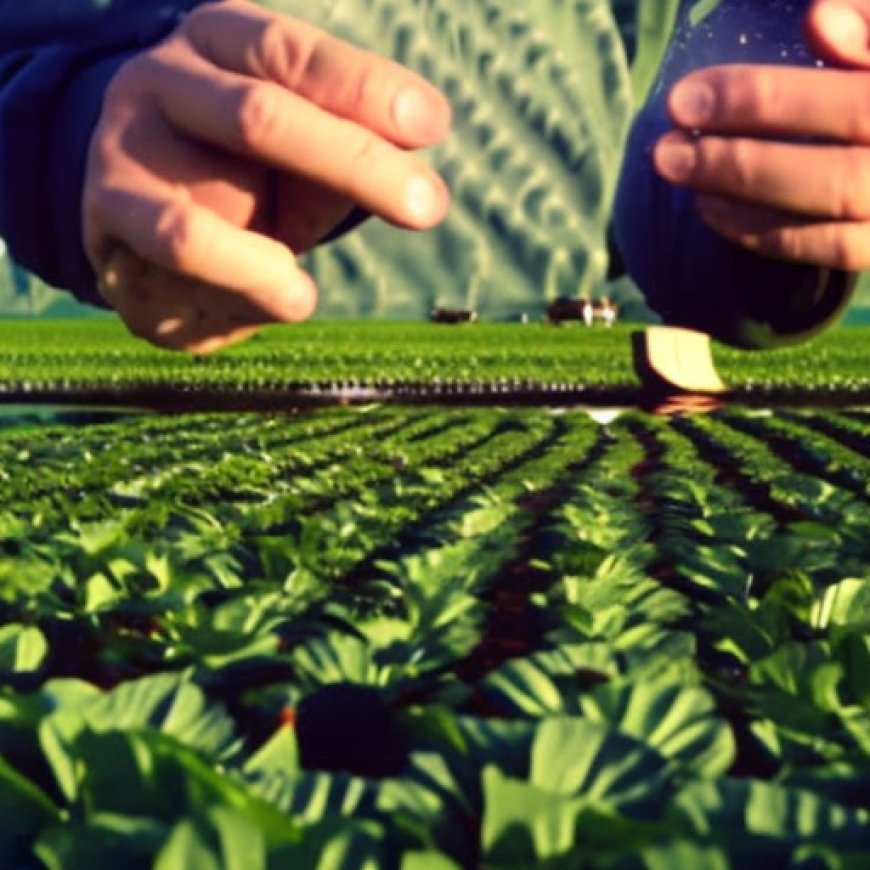Celebrating Aquaculture Week: Farming from Tide to Table


Welcome to National Aquaculture Week
During National Aquaculture Week, we celebrate the increase in access to fresh seafood while protecting coastal resources. Seafood farming, when done responsibly like in the United States, is one of the most environmentally sustainable ways to produce food and protein. Marine aquaculture has the potential to expand and stabilize the U.S. seafood supply in the face of environmental change and economic uncertainty.
Celebrate Aquaculture Week by learning about members of the aquaculture community who provide valuable jobs and increase access to fresh, sustainably sourced American seafood. Aquaculture is more than just seafood production. It encompasses ecosystem stewardship, coastal communities, and economic opportunities.
New Aquaculture Features
Podcast: How to Maximize Aquaculture—Growing More Seafood Through Science
Have you ever heard the expression “What grows together, goes together”? In our latest podcast, hear from a scientist using an ecosystem approach to aquaculture, growing multiple seafood products together in a sustainable system.
Tide-to-Table Profiles
Kodiak Ocean Bounty Grows Oysters in Rural Alaska
Erik O’Brien is an oyster farmer working to anchor jobs and food in his rural Alaska community.
Big Island Abalone Grows Shellfish in Hawai’i
Satoshi Yoshida is an abalone farmer bringing a new kind of shellfish to Kona, Hawai’i.
Ocean Rainforest Farms Seaweed in Southern California
Javier Infante is a seaweed scientist doing cutting-edge research offshore Santa Barbara, California.
American Unagi Farms Eels, on Land, in Maine
Sara Rademaker is an eel farmer passionate about bringing sustainable jobs to rural Maine.
DJ’s Oyster Company, Growing a New Kind of Oyster in Texas
David Aparicio is an oyster farmer demonstrating resilience after a hurricane in Palacios, Texas.
Read about DJ’s Oyster Company
More Aquaculture Features
NOAA Fisheries and USDA’s Agricultural Research Service to Breed Better Oysters
NOAA Fisheries and the U.S. Department of Agriculture Agricultural Research Service opened a new Northeast Oyster Breeding Center in Milford, Connecticut.
Learn more about the new oyster-breeding center
Video: Swinomish Indian Tribal Community Clam Garden
NOAA helped the Swinomish Indian Tribal Community build the first modern clam garden in the United States. It will provide food for the community, and provide environmental diversity that’s important in the face of climate change.
Podcast: Planet NOAA Podcast Episode 8—SEA-stainability
Aquaculture, or farmed seafood, is making the way we live, work, and eat more sustainable. Break down the inner workings of NOAA’s aquaculture and sustainability science with Chief Scientist Dr. Sarah Kapnick and special guests.
Podcast: Seaweed—The Miracle Macroalgae with Major Economic and Environmental Value
Discover the versatility of seaweed and the contributions of seaweed farming, or seaweed aquaculture, to working waterfronts and environmental sustainability.
Story Map: Farming from Tide to Table—Aquaculture Recipes and Stories from Across the United States
Explore the map to learn about aquaculture growers across the country, and pick up a few new recipes!
SDGs, Targets, and Indicators
-
SDG 2: Zero Hunger
- Target 2.4: By 2030, ensure sustainable food production systems and implement resilient agricultural practices that increase productivity and production, that help maintain ecosystems, that strengthen capacity for adaptation to climate change, extreme weather, drought, flooding, and other disasters, and that progressively improve land and soil quality.
- Indicator 2.4.1: Proportion of agricultural area under productive and sustainable agriculture
- Indicator 2.4.2: Average income of small-scale food producers, by sex and indigenous status
-
SDG 14: Life Below Water
- Target 14.4: By 2020, effectively regulate harvesting and end overfishing, illegal, unreported and unregulated (IUU) fishing and destructive fishing practices and implement science-based management plans, in order to restore fish stocks in the shortest time feasible, at least to levels that can produce maximum sustainable yield as determined by their biological characteristics.
- Indicator 14.4.1: Proportion of fish stocks within biologically sustainable levels
- Indicator 14.4.2: Proportion of fish stocks that are within biologically sustainable levels, by species
-
SDG 8: Decent Work and Economic Growth
- Target 8.3: Promote development-oriented policies that support productive activities, decent job creation, entrepreneurship, creativity and innovation, and encourage the formalization and growth of micro-, small- and medium-sized enterprises, including through access to financial services.
- Indicator 8.3.1: Proportion of informal employment in non-agriculture employment, by sex
- Indicator 8.3.2: Proportion of youth (aged 15-24 years) not in education, employment or training
Table: SDGs, Targets, and Indicators
| SDGs | Targets | Indicators |
|---|---|---|
| SDG 2: Zero Hunger |
|
|
| SDG 14: Life Below Water |
|
|
| SDG 8: Decent Work and Economic Growth |
|
|
Source: fisheries.noaa.gov








